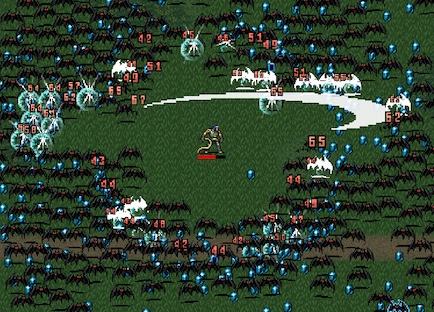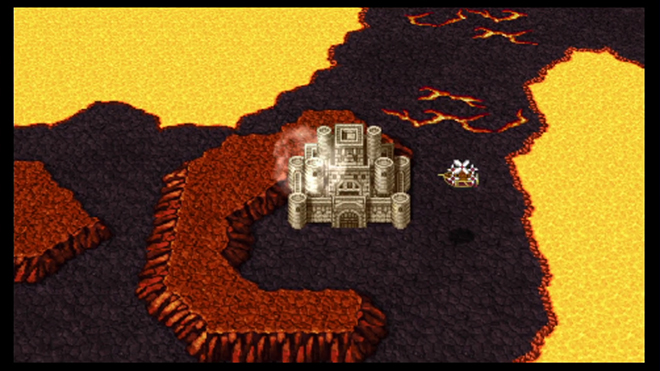Semantic Nonsense: Actually Four in February

Lately I have not often gone four for four in my Februaries, but this year was a resounding success. By which I mean the plan mostly went to hell but somehow it all worked out in the end.
I had originally planned on using The Legend of Zelda: The Windwaker HD and Dredge flor credit this month, with Tavern Master on standby as a backup option. But between the delay to Windwaker by Persona just not letting me go until it was done and an unexpected offline distraction, all three of those games were not finished in February. Fortunately the streaming plan went off more successfully than expected, even if it was a little off, and the offline distraction provided the fourth.
However, I am exiting Four in February with a larger backlog than when I started it, as I added some games that were missing from it, and a few new ones were added. The Like a Dragon series was responsible for three additions all by itself.
As is now tradition, I will be writing up the four beaten games for the blog. After all, I already talked about it and it would be a major tease to not close that loop. Up first is the offline game.

Vampire Survivors DLC: Legacy of the Moonspell
I was super big into Vampire Survivors when it first came out. The only reason it didn’t get a Loop Hero-style emergency stream is because I thought the gameplay would be openly hostile to a streaming bitrate.
For those of you unfamiliar with 2022’s biggest indie game, Vampire Survivors pioneered what I think we’ve decided to call the “bullet heaven” genre of games in which your avatar spews an ever-increasing amount of weapons at an ever-increasing amount of targets in the hopes that you can build yourself up in such a way that your spam wins. It comes with an extra design flair of evoking the Castlevania series in its setting, character design, and verbal references though not in its lore or gameplay.
I played the heck out of the game in Steam’s Early Access program (which is very unlike me; I almost always wait for a game to hit version 1.0 before throwing money at it), which means I got through it all and move on to other games before Adventure mode was added to the base game, let alone any of the DLC packs. At first, I intended to count going back to the Adventure mode additions as well as the first DLC pack. However, either my old save was no longer compatible with the current version or the progress was just plain lost, and I found myself at the very beginning of the entire game.
Having to go through it all again was still plenty of fun, though. And it was like riding a bicycle; I slipped back into old strategies I learned the hard way the first time and knew how to get the most bang for my buck out of upgrades. I even remembered a few secrets that helped me get back to where I ought to be more efficiently.
As for the DLC, it provided some new maps for a new adventure mode story consisting of new characters with new weapons. Once completed, all of them can be unlocked in the base game for even more varied shenanigans. There’s no real need to go into it in any depth; the key takeaway from the DLC is that it gives you more game in both the form of an isolated slice and in an integrated manner. And that’s just what DLC ought to be in most cases.
While there are two additional DLC packs available, perhaps they will wait for next February. Not that I’ve been terribly good at waiting lately.
Aggelos
I was generously donated this game, and more or less sold on playing it by being told it was similar to Super Adventure Island II. And it was only when I started playing Aggelos that I realized how much Super Adventure Island II dragged the series — albeit temporarily — to the development path Wonder Boy took into Monster World long after Adventure Island spun off of Wonder Boy.
But odd developmental journeys of longstanding franchises aside, Aggelos seemed like a perfect inclusion in the streaming schedule since I want to include at least one Metroidvania each year. And it was short enough that I could start it at the end of January and have time left over for knocking out a second short game on stream and get half of my #4iF done before I spent a single unscheduled minute on it. As fate would have it, I would spend 20 or so unscheduled minutes on it in the end, but it was a small price to pay in exchange for being able to knock out a third game on stream. I’d say I love it when a plan comes together, but as much as it did come together it sure as heck wasn’t a plan.
There were a few struggles with the game. Combat could be brutal at times, but every encounter is learnable and can be overcome by adapting your strategy and getting a good go at executing it. The controls were also somewhat hampered by clumsy support for controllers on the Steam version, but it didn’t go so far as to make the game unplayable.
That being said, I’d rather not dwell on the negative parts. Because Aggelos was a nice throwback that I did enjoy. I liked the traversal puzzles and the exploration. Nothing was too big or too small, and the game gave you enough variety in your abilities and the level design that kept things engaging from start to finish without each new mix-up making the skills you used before become obsolete.
Aggelos was a good suggestion, a good gift, and a good time.
Typoman: Revised
There was an entire era in which indie platforms were very artistic, very creepy, very short, very little expressed narrative, and had a dubious grasp on platforming controls. And perhaps that era still hasn’t ended. But a game that has been languishing on my to-do list since the Wii U days finally came to the fore as I broke Angela’s streak of streaming such games.
As far as motifs go, spelling words to affect the environment was fun and was reminiscent of the Scribblenauts series from back on the DS. It was fun just standing around and spelling random words to see if they were in the game’s dictionary. That all being said, the number of words that actually did anything was pretty low. There weren’t many Easter egg words, and there often weren’t clever things to do other that stick to the intended path with the intended methods of moving forward.
Typoman‘s mechanics are begging to be used in a larger, more open-ended game. As a puzzle platformer, it works fine as-is. But there was so much more that could have been squeezed out of the gimmick before it lost its luster.
Gargoyle’s Quest II
The more I played Gargoyle’s Quest II, the more it felt like a somewhat altered remake of the Game Boy original rather than a sequel. Though story wise, it’s a long-ago prequel depicting what was a legend by the time of the original game.
The game shows its age often with its rather extreme lack of balance. You’ll go back and forth between brutal gauntlets or pixel-perfect platforming to exploiting safe spots and cheesing your way across a level with a broken skill.
Honestly, as a 1992 NES game, it doesn’t have an excuse to not have improved hardly at all from the Game Boy version in the two years that passed in between them. Especially when you consider that Capcom had already produced DuckTales and the first four Mega Man games by that point. A deeper understanding of crafting satisfying platforming challenges was available. I can only imagine this was the fault of trying to keep the NES game in line with the Japan-only Game Boy version.
Whatever the reason, I can’t recommend the game to anybody other than series fans or those who otherwise have nostalgia or appreciation for B-Tier NES games. There still isn’t anything else on Game Boy or the NES that plays like the Gargoyle’s Quest games, and they certainly aren’t BAD games. But what is a system-seller on Game Boy needs more than a splash of color to compete with the best offerings of the NES, even when limited to the developer’s own catalog.





